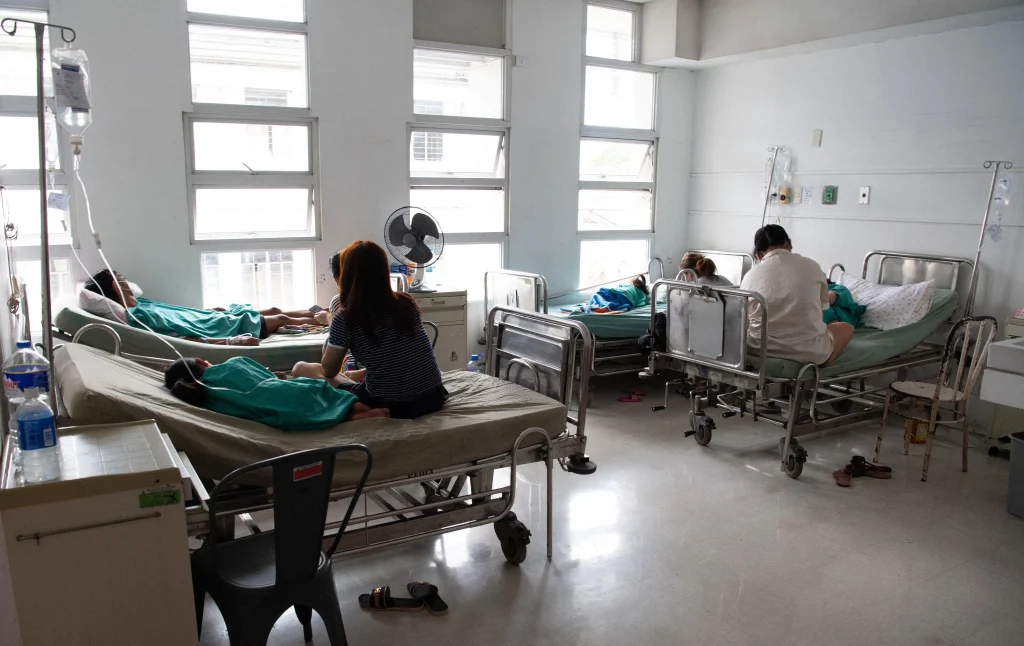QUALITY healthcare is a fundamental right and a smart economic strategy. Yet across South-east Asia, access remains uneven and national systems are under-resourced, just as demand is rapidly rising.
Despite ongoing reforms, public healthcare spending across Asean averages just under 4 per cent of gross domestic product, far below the Organisation for Economic Co-operation and Development average of over 9 per cent. The implications are clear: overburdened systems, high out-of-pocket payments and unequal outcomes.
Health is just as much of a crisis as an economic one. The World Bank estimates that poor health reduces GDP growth by up to 1.5 per cent annually in lower-middle-income countries, and Asean cannot afford to lose momentum in an increasingly competitive global economy.
A system under pressure
This double burden of a growing population and rising rates of chronic disease is already straining healthcare systems that remain underfunded and uneven in coverage. Without bold, targeted investments in prevention, infrastructure and workforce development, the region risks being overwhelmed.
A NEWSLETTER FOR YOU

Friday, 8.30 am
Asean Business
Business insights centering on South-east Asia’s fast-growing economies.
The consequences go beyond public health: they impact labour productivity, household income and long-term economic growth. Covid-9 was a stark reminder of how vulnerable under-resourced systems can become in a crisis, and how critical early, consistent investment is to prevent collapse.
Private sectors as strategic partners
Public-private partnerships (PPPs) play a catalytic role in strengthening healthcare systems. Not only through injecting funds, but also by scaling innovation and enhancing delivery models to build resilience in existing models.
Recent investments – such as Bain Capital investing over US$150 million in Indonesia’s Mayapada Healthcare Group to expand its hospital operations, or Warburg Pincus investing in Vietnam’s Xuyen A to expand services to include comprehensive oncology care – reflect growing investor confidence in Asean’s healthcare sector.
But these should not be isolated wins. Governments need clear PPP frameworks that de-risk investment, align incentives and focus capital on priority areas, such as rural service delivery, digital health and preventative care.
Take, for example, Pasig City in the Philippines partnering with Japanese company Infic, which uses artificial intelligence and robotics to enhance geriatric care. Beyond convenience, it is a glimpse into the future.
Asean’s over-60 population is projected to more than double from 2020 to 2050, rising from 65 million to over 150 million. Without scalable solutions, this surge will outpace healthcare capacity across much of the region.
Regional cooperation can be a force multiplier
While national healthcare systems vary widely across Asean, cross-border collaboration remains under-leveraged. Harmonising regulatory standards – such as enabling the cross-border purchase of over-the-counter (OTC) medicines – could lower costs, improve access and strengthen crisis preparedness. The EU’s experience during Covid-19 shows how aligned frameworks can accelerate distribution and availability, offering a model Asean could adapt.
In particular, regional digital health frameworks could offer a powerful path forward. Platforms like Indonesia’s SATUSEHAT and Singapore’s National Electronic Health Record already demonstrate the potential for connected systems. With proper standards and governance, these innovations can cross borders, helping migrants, travellers and underserved border communities access continuity of care.
Financing must be predictable and purposeful
To achieve this, Asean must adopt a more sustainable and strategic approach to health financing. Sin taxes, which have been adopted in the Philippines and Thailand, do not address the root cause of the rise in NCDs across the region.
Broader measures – such as reformulation and repackaging – must be explored, to enable producers and private stakeholders to work with government ministries across Asean to find solutions that allow consumers to adopt healthier options and lifestyles at convenience.
Importantly, the region must reduce its dependence on external donor funding. The recent freeze in US foreign aid, announced in early 2025, has already caused disruptions in South-east Asia, affecting services for refugees along the Thai-Myanmar border and interrupting HIV programmes in countries such as Myanmar and the Philippines. This is a stark reminder of the need for self-reliant, long-term funding streams.
Looking beyond 2025
As Asean finalises its post-2025 Vision, healthcare must be placed on equal footing with regional economic and development policy. There is a strong need for Asean to work with private stakeholders to deliver quality healthcare for all. Health is not a cost to contain, but an investment in human capital, productivity and social stability.
Strong, inclusive health systems are the bedrock of resilient societies. The solutions exist – from innovative financing models to proven partnerships and regional platforms. What is needed now is the political will to act decisively and a new collaboration model between governments, the private sector and regional bodies.
If Asean is to build a future that is healthier, more inclusive and economically sustainable, it must start by funding healthcare not as an afterthought, but as a strategic priority.
The writer is executive director, EU-Asean Business Council


